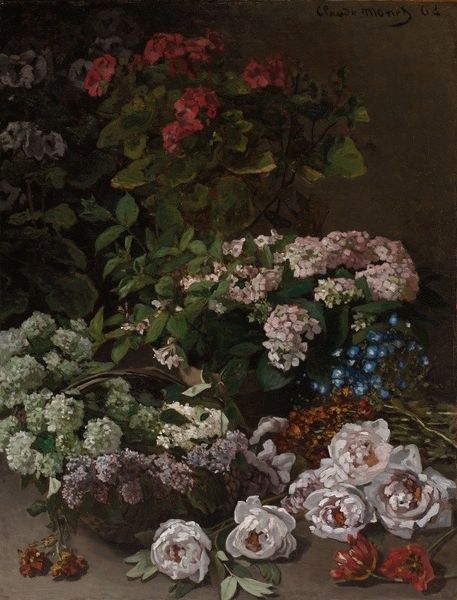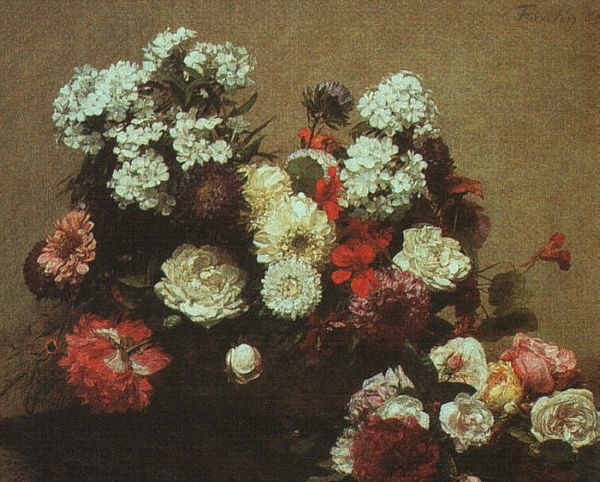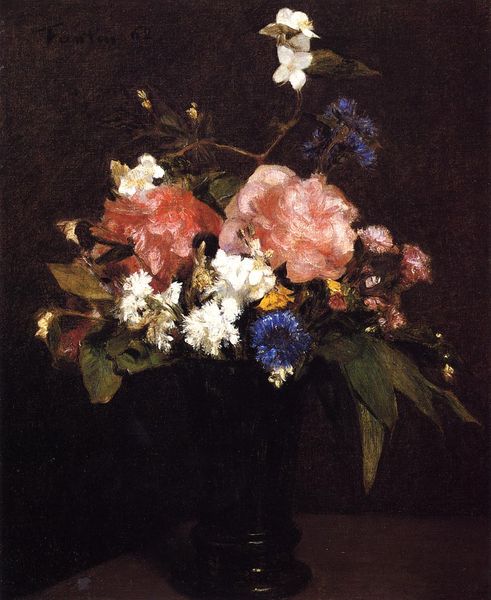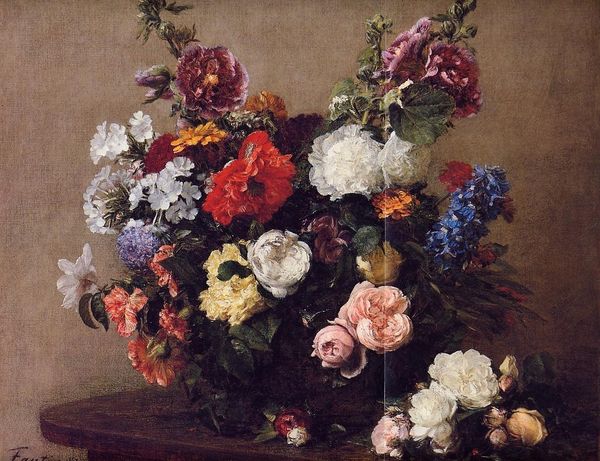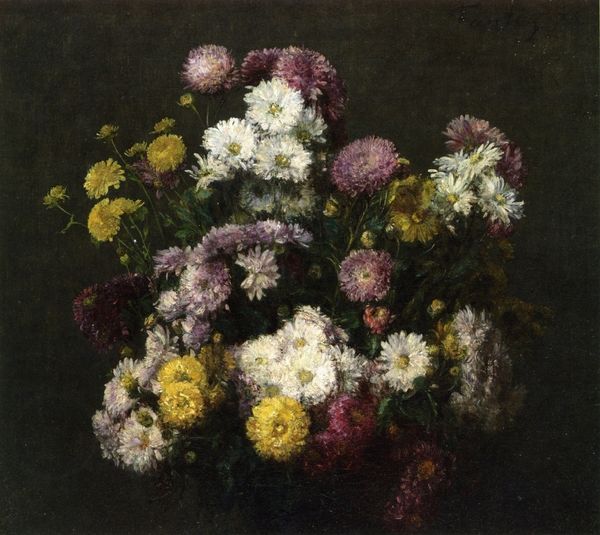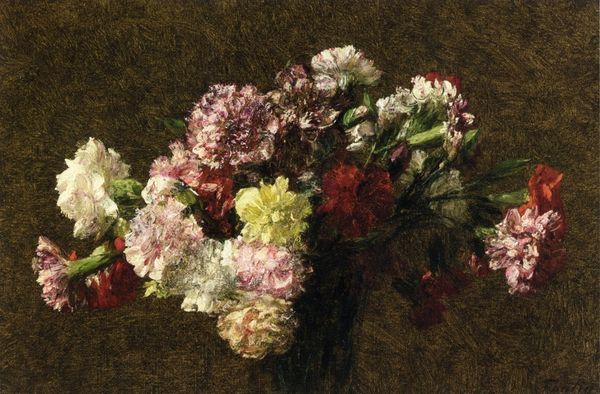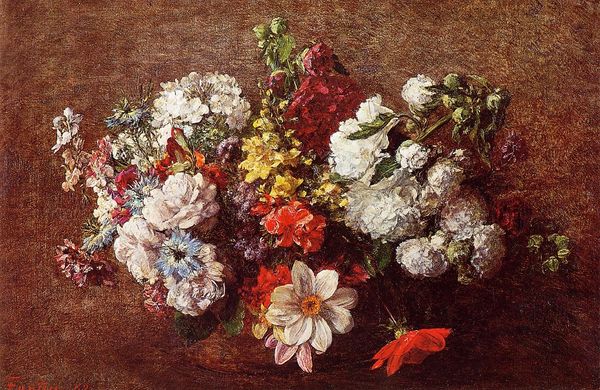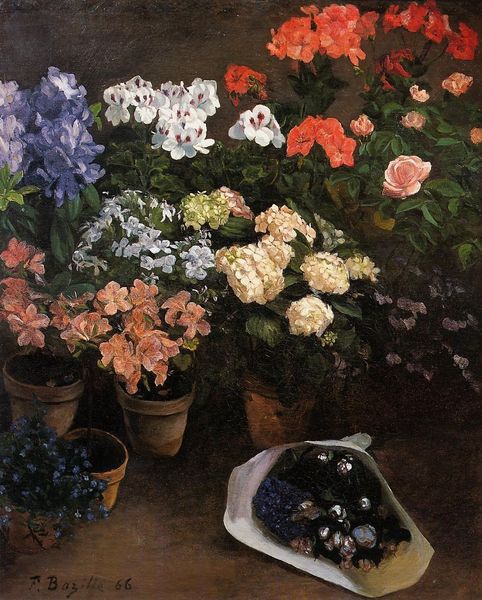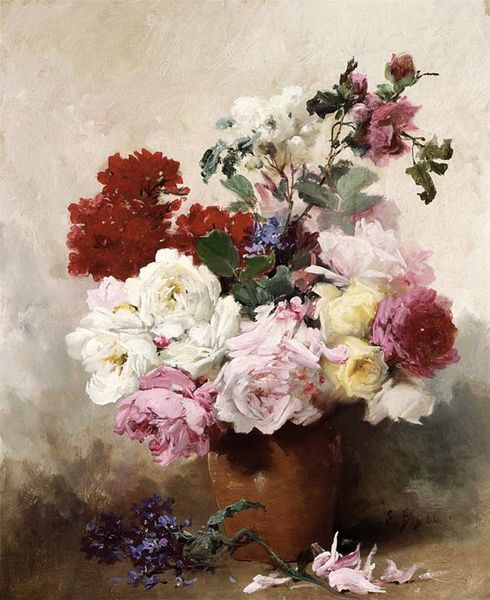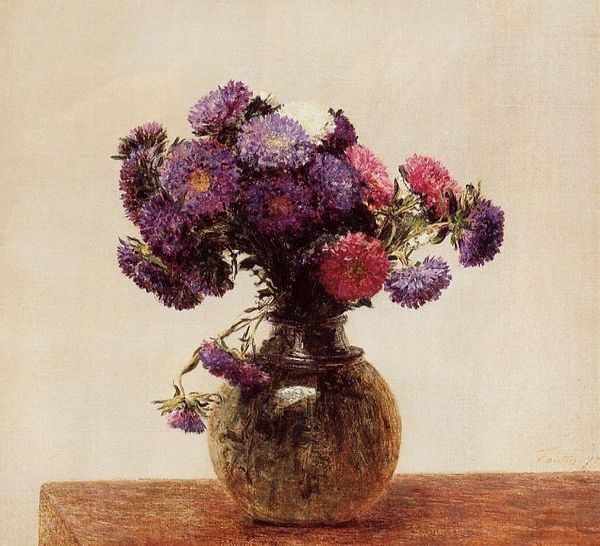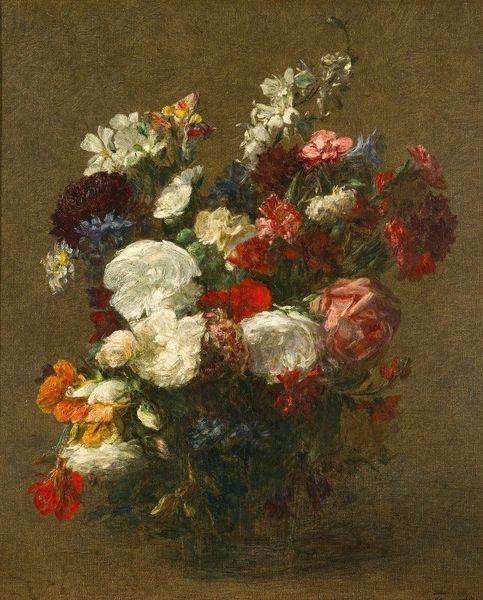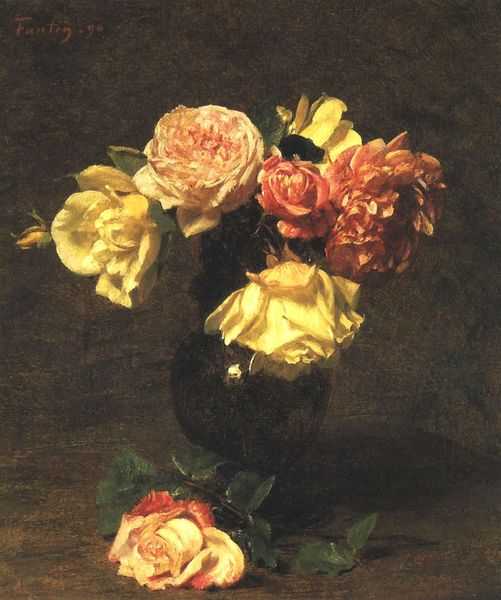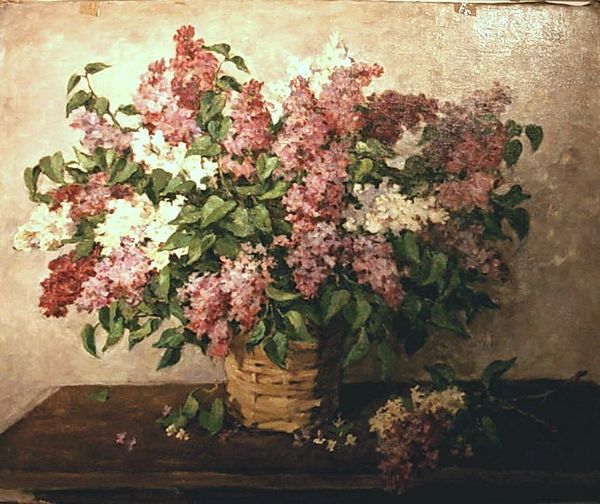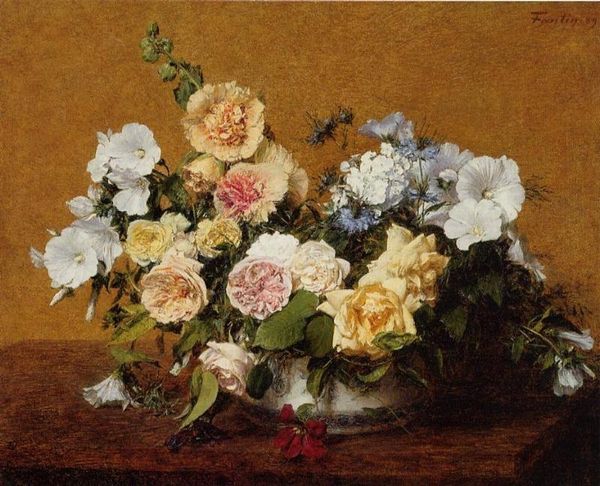
painting, oil-paint, photography
#
painting
#
impressionism
#
oil-paint
#
flower
#
photography
#
oil painting
#
plant
#
realism
Copyright: Public domain
Curator: What a beautifully somber, yet vibrant composition by Henri Fantin-Latour, titled "Hydrangias, Cloves and Two Pots of Pansies," completed in 1879. It's a celebration of the still life, of course, but something deeper is going on, I think. Editor: My initial feeling is one of melancholy, intensified by the low-key tonality, although those saturated reds and yellows in the lower register disrupt the muted palette in a rather unexpected way. Curator: Absolutely. Consider that floral still lifes have been associated with 'memento mori' since the 17th century; this symbolism evolved beyond simple reminders of death. Here, Fantin-Latour creates almost a cultural memory. The blooms signify fleeting beauty but perhaps also echo personal relationships, the kind preserved by giving flowers as gifts. Editor: I’m curious about the visual tension between the structured forms of the hydrangeas and the almost wild, haphazard arrangements of cloves. What could that opposition signify for Fantin-Latour, and, for us, as viewers? Curator: That contrast intrigues me too! Perhaps it reflects the Victorian era's societal expectations—controlled exterior vs. a more emotional, less inhibited inner self. Remember that floral arrangements themselves carried specific meanings then. Red for passionate love, perhaps, but the pansies, of course, with their symbolic 'thoughts,' introduce complexity. Editor: Also the texture! Look how the loose, painterly strokes contrast with smoother passages, as if the artist is trying to reconcile different approaches, moving freely between abstraction and detailed representation. Curator: True. In Victorian culture, so much was encoded, not just in material objects but also in behaviors. Flowers became ways of communicating nuanced and secret messages. So this painting exists as a coded language in a sense. Editor: This tension you mentioned resonates further when considering this painting through a modern lens. What do these historical symbols mean in our current understanding of them? Are these traditions we consciously carry, or subconscious, and thus more complex? Curator: Precisely. It's this layering of symbolic meaning, viewed and understood by successive audiences, that elevates the piece from simple flower study to compelling psychological and cultural document. Editor: I came for the forms and colors, but leave thinking about memory. It always shifts our perspectives, doesn't it? Curator: Indeed. Fantin-Latour presents what we might dismiss as merely a beautiful scene, but actually it's an entry point into the delicate network of feeling, memory, and cultural tradition.
Comments
No comments
Be the first to comment and join the conversation on the ultimate creative platform.
